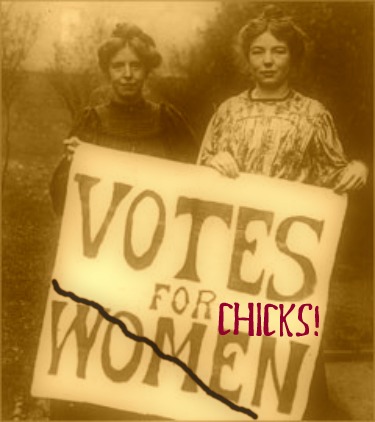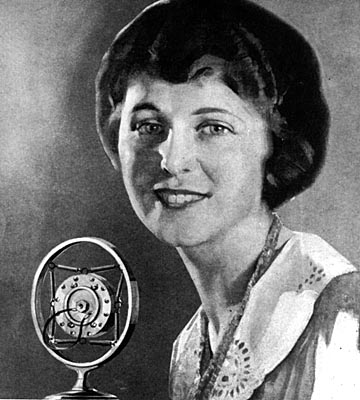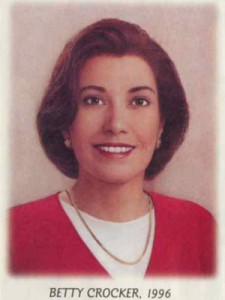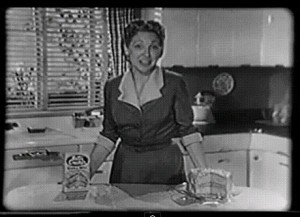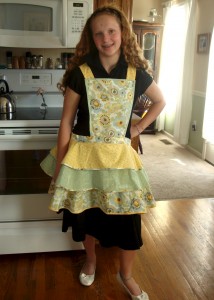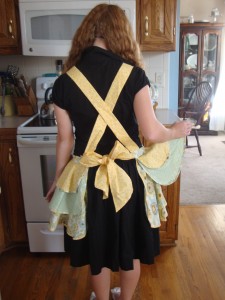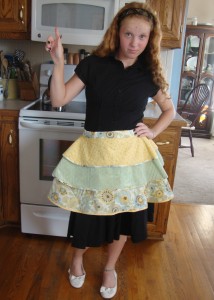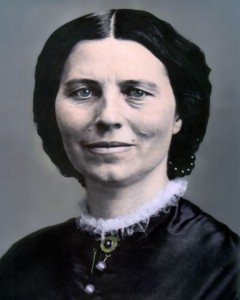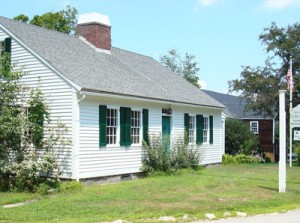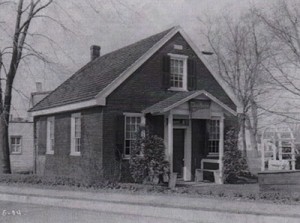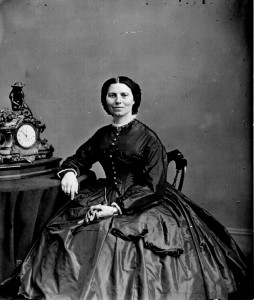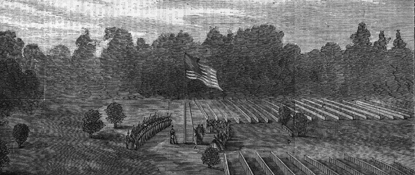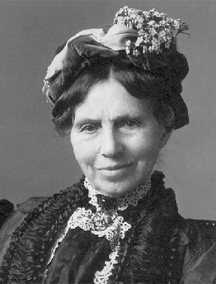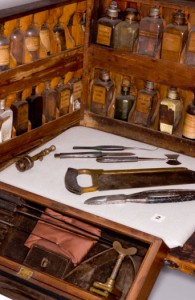News from The History Chicks
Episode 15A: Betty Crocker and our first Giveaway!
In this minicast, we have a little discussion about the history of Betty Crocker. (You know she wasn’t real, right? We’re going with the fictional character theme.)
We talk history of this brand icon and the times she was not only created, but the many years that she has endured and changed. You may find out some things that you didn’t know ( like she started on radio). Or you may just end up wanting to go bake something. It really could go both ways, too. Why don’t you bake something WHILE you listen?
Watch this vintage Betty Crocker cake commercial : The men sure love it – and so will your bridge club!
http://www.youtube.com/watch?v=WcrCyypYEuI
GIVEAWAY!
For our very first ever giveaway we are offering up two very stylish, vintage inspired aprons made by our dear friend, and Susan’s personal apron supplier- Other Susan. We picked out the fabrics, and Other Susan did the rest.
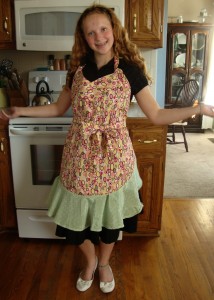
Second Prize! Custom, full practical apron (This is the style Susan runs around her neighborhood wearing. *sigh*)
Yes, the apron is a symbol of some less than feminist qualities—but dang it! These are cute and- in the words of Beckett when she saw these pictures, “That’s being a true chick! Do what you do and damn the rest!”
Want one? Post a comment to THIS shownote, telling us who your favorite TV Mom is (any era). On October 30, 2011-mid dayish- we will do a random drawing of the names and pick two winners. Make sure that the email you supply us with when you post your comment (it does not appear on posted comments) is one that you monitor so that we can get the shipping details from the winners. Good luck!
(Here is a link to Other Susan’s Etsy shop, From Pieces.http://www.etsy.com/shop/FromPieces She does custom work as well as featuring some pieces in her shop.)
Before we leave the 1950’s behind, thank you for listening! We are nominated in the Education category for the 2011 People’s Choice Podcast Awards! If you would like to vote, and it is before October 27th, 2011–click this link! Thank you! http://podcastawards.com/
Episode 15: The 1950’s Housewife
Once a season we take a slight break from reality and sit down for a chat about a fictional woman. This season we chose not one, but a group: The 50’s TV Mom – and their slightly more real counterparts, the 50’s suburbanite.
That’s right, what better way to embrace our modern womanhood, than to take a serious look at a stereotypical, unobtainable-to mere-mortals, obedient, white, heterosexual wife?
WOOT! Fire up the keyboard and get those letters of protest going!
(Ok, really? Don’t. Yikes… Thank you!)
DISCLAIMER: We get a bit, um, goofy in this episode. If you are looking for serious, somber history- look away. We present facts of course, but our usual speculation and lighthearted chatter is upped. Big time.
We DO look at this topic from a historical point of view, but first our exhaustive research of the women had to be undertaken. We narrowed our focus down to several whom we thought were true representatives of the genre.
(And we use words like “genre” to give the illusion that this is more brainy that it really is. We watched A LOT of TV)
Harriet Nelson (The Adventures of Ozzie and Harriet)
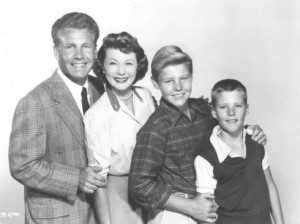
Donna Stone (The Donna Reed Show)
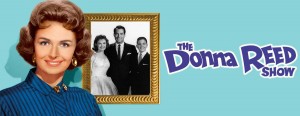
Lucy Ricardo (I love Lucy, Lucille Ball)
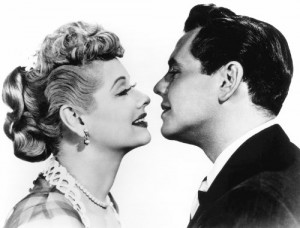
June Cleaver (Leave it to Beaver, Barbara Billingsley)
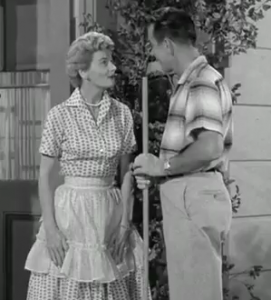
We touch on characters from other shows-Make Room for Daddy, Father Knows Best, The Dick van Dyke show- but we felt that these gave the best example of the ideals that the 50’s stereotypical housewife possessed.
We are, after all, all about history, so we lay the scene that created an environment to let such a symbol of femininity grow to idol status in American society. We talk the Great Depression and WWII because that is the background of the Moms of the 50’s. We discuss the economy, the sociological and economic changes in the country, throw out some statistics and paint a picture of the expectations and role of women in society.
Then we get to the giggly part and talk about the stereotypical woman herself. What her life was like vs the real life of the woman she represented during this era. We talk about both the dark and the light sides of this women’s life. We talk about the foods, the appliances, and the conveniences of the time.
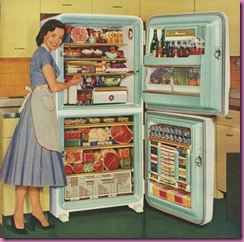
And we talk fashion because we like retro fashion. A lot.
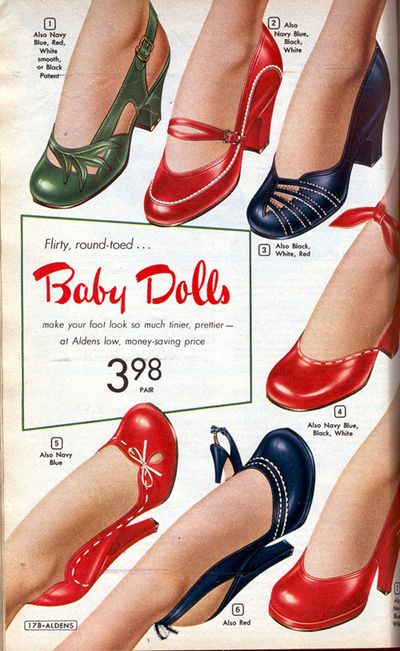
Bottom line: The 1950’s Television Housewife was a part of the American culture and a step in the path to where women are today.
Because we are off of our usual factual woman topic ( and possibly still riding a banana bread buzz) we will also stray from our usual methods….and will actually have * trumpets please* a giveaway!! Stay tuned for details!

Time Travel With The History Chicks
Right at the top of this list, we recommend this blog, Jen But Never Jenn. She conducted a 50’s Housewife Experiment that both amused and fascinated us. (Susan so much so that she decided to conduct her own, in a total rip off way. We contacted Jen and she was cool with it. More on this in an upcoming minicast) http://www.jenbutneverjenn.com/2010/05/welcome-to-50s-housewife-experiment.html
If you are enamored with the era, there is a blog and messageboard for that! Kitchy and fun! http://www.theapronrevolution.com/forum7.html
We Lol’d repeatedly at The Gallery of Regrettable Food: http://lileks.com/institute/gallery/
The link to the Striving Wife (the one that Susan could not remember) is here. Written by, and for, women who think the 50’s Housewife ideal is spot on. This is just one post of many on a blog devoted to the life of a Christian wife. The posts are written with respect and a very deep faith. http://thestrivingwife.com/what-makes-a-good-wife-the-1950s-ideal-vs-modern-day/
And we watched HOURS of old TV episodes Hulu.com – Father Knows Best, I love Lucy, Leave it to Beaver, The Donna Reed Show and The Dick Van Dyke show.
Speaking of Donna Reed, The Donna Reed Foundation for the Performing Arts, a museum in Denison IA dedicated to her memory and work . Visit them online http://www.donnareed.org/html/templates/dr_section.php?dr_section=main
And here is a link to those Maidenform ads that cracked Beckett up: http://www.tressugar.com/Dreaming-Shirtless-Look-Back-Maidenform-Bra-Ads-3174297?
We KNOW you love your books! We recommend:
The Way Things never were by Norman Finklestein
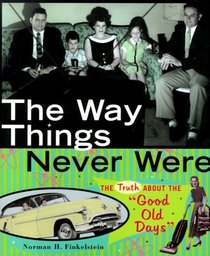
Something from the Oven, by Laura Shapiro
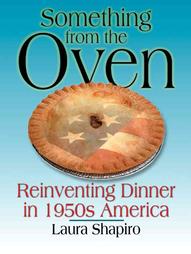
And finally, the one that we loved, not just for this episode, but for many eras: The History of the Wife by Marilyn Yalum

As always, music comes courtesy of Music Alley, visit them at music.mevio.com
Episode 14 – Clara Barton
Episode 14: Clara Barton
Clara Barton. We have received a lot of requests to discuss the life of this teacher, nurse, founder of the American Red Cross and legendary humanitarian. In this episode we finally get to do just that. (Audio is remastered from the original, We’re Still Learning phase.2/19)
Clarissa Harlowe Barton was born December 25, 1821 in North Oxford, Massachusetts to Stephen and Sarah Barton. We talk about her childhood as the youngest ( by several years) of five siblings and share some stories about her childhood. It wasn’t as if she was babied, quite the opposite- she was given freedoms and allowed to do activities that other children her age would probably not have been. It didn’t appear as if she was a particularly cheerful child, very much a tomboy and very smart.
We do tell some interesting stories that will revisit her later in life: Her father was a former soldier and told her about war. Her brothers taught her to be brave, her mother taught her to think for herself. All of them taught her to work hard.
But the most foreshadowy of tales is the one that happened about age 11. Her older brother, David, fell from a roof and was badly injured. Clara stayed indoors, by his side, nursing him back to health. For months!
The nursing theme will run through her whole life, of course, but first she had to be a teacher. And learn some valuable life lessons. Painful ones. At one point she had established a public school in Bordentown, New Jersey and, upon returning after a summers break, discovered that her position had been given to a man ( at a higher salary) and was told that she could be his assistant! Ouch.
Off Clara went to Washington, DC to take a job as the first woman clerk in the US Patent Office.
Of course we discuss this in more detail, but Clara rocked the job. We don’t know if she was the best office buddy to have, but this woman knew how to get things done!
Which was good because when the Civil War broke out her getting things done skills would be put to the test. In addition, Clara was a master at seeing a need and filling it. She saw a need for supplies to be collected, so she ran ads , set up warehouses and started getting the needed supplies to the battlefield.
Clara Barton’s history in the battlefields of the Civil War is a history of the war itself. She was at many of the famous battles, tending to the injured and dying. She assisted in amputations, and helped with first aid. She wrote down the names of the dying, so that family could be notified. She made the men, without regard to uniform color, as comfortable and well fed as possible until they could be moved to hospitals. Or passed away.
It was during this time she was called The Angel of the Battlefield.
Her contributions to her country during this time cannot be taken lightly, as we often do, but instead, fully appreciated for the sacrifices that she made while remembering the context: where were most women during this war?
After the war, Clara was sent to help establish a cemetery at Andersonville Prison. Her painstaking task was to mark the graves of the 13,000 soldiers who had died during the 15 months the prison was open.
For most people, the things that she had accomplished during the Civil War would be enough for one lifetime. But Clara wasn’t done.While on vacation in Europe, she had a chance to see the Red Cross in action. And she liked what she saw. This was exactly what she had done during the war. She decided that the United States needed to sign the Geneva treaty and establish a Red Cross of its own.Of course, in retrospect, we can see that whatever this woman sets her mind to, happens. And it did. It took a lot of hard work on her part, but in 1882 President Chester Arthur signed the treaty of Geneva and the American Red Cross was officially established.
We discuss her role, her further wars and how she maintained control and an active life working for the Red Cross for the rest of her life. She retired at age 82 (EIGHTY TWO!) although she continued to make speeches for many years.On April 12,1912 at the age of 90, Clara Barton died in her home in Glen Echo, Maryland.
Time Travel With The History Chicks:
If you happen to find yourself in Glen Echo, Maryland visit the Clara Barton National Historic Site. If you happen to find yourself in your own house in another town and want to see a chunk of this treasure, simply click this link http://www.nps.gov/clba/index.htm
Lots of virtual toys to play with! Her birthplace in North Oxford, Massachusetts is also a museum devoted to her life. http://clarabartonbirthplace.org/site/
Of course, The American Red Cross has quite a bit of information about the life of this woman, including a virtual museum with some artifacts that belonged to her. http://www.redcross.org/museum/history/cbcollection.asp
If you are inspired by the dedication this woman made to this organization–or whatever your reason- perhaps you would like to make a donation . Click here and then click on the big red button. http://www.redcross.org/
Books! You like books! Since we were compelled to discuss this woman thanks to an email from a young lady, here are some recommended young reader books:Your library will have a lot to choose from- and they all have the same title!”
Clara Barton: Founder of the American Red Cross by Dorothy Francis
Clara Barton: Founder of the American Red Cross by Cynthia Klingel and Robert Noyed
If Civil War era medicine is your thing, there is a museum in Maryland devoted to it. http://www.civilwarmed.org/
The life of this unique woman can be looked at many ways- through medicine, through battles and the Civil War, through humanitarian efforts we could go on and on with paths for your self discovery. But this should get you going. If you are compelled to look farther into her life, drop us a line and let us know what you did!
As always, music comes courtesy of music alley, find them at music.mevio.com
